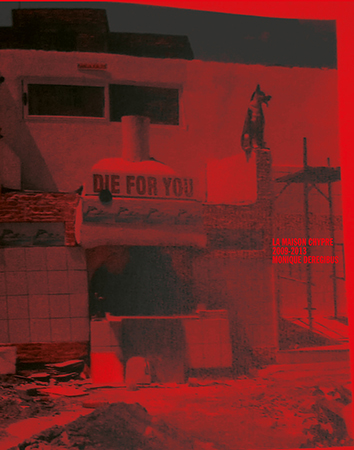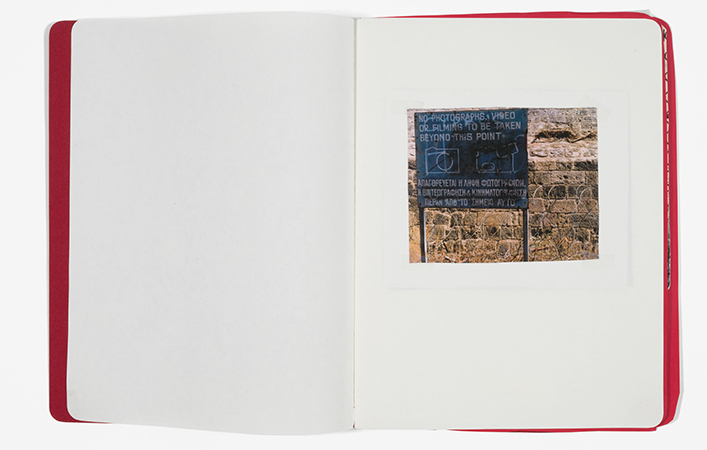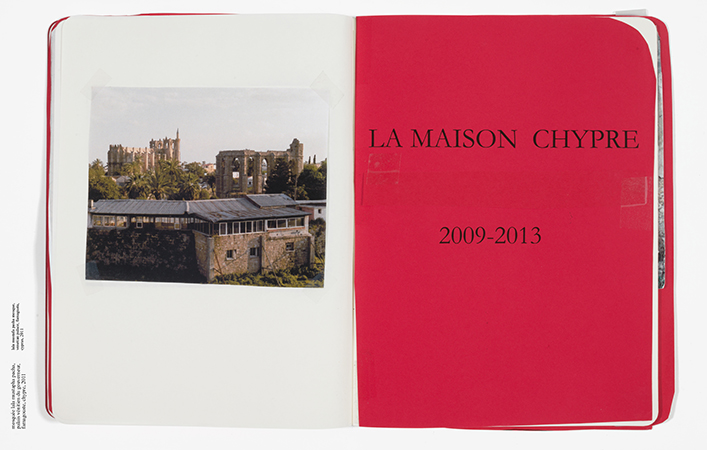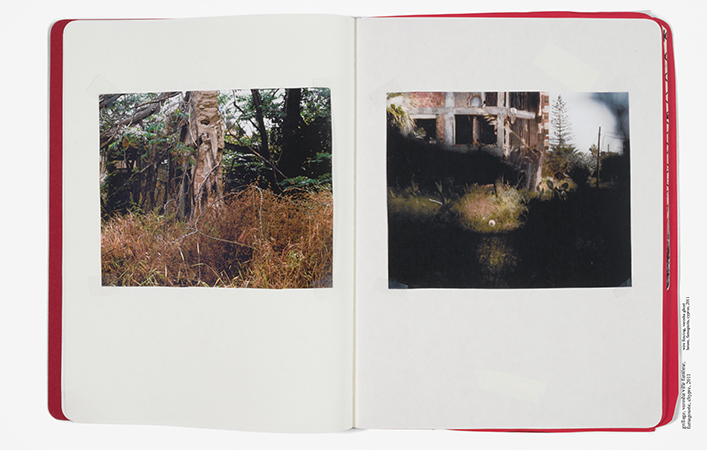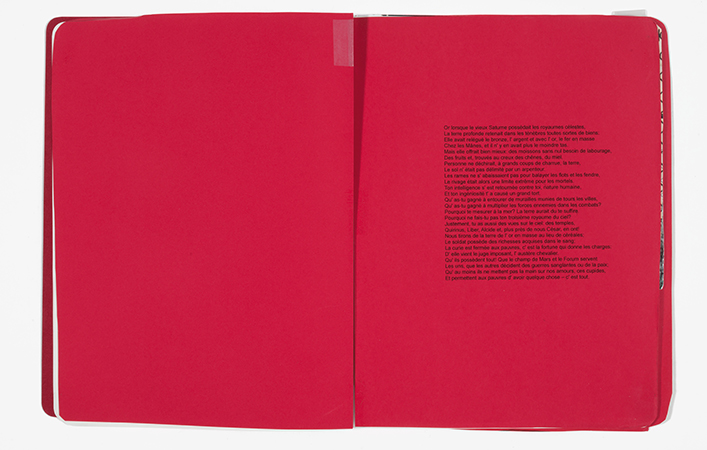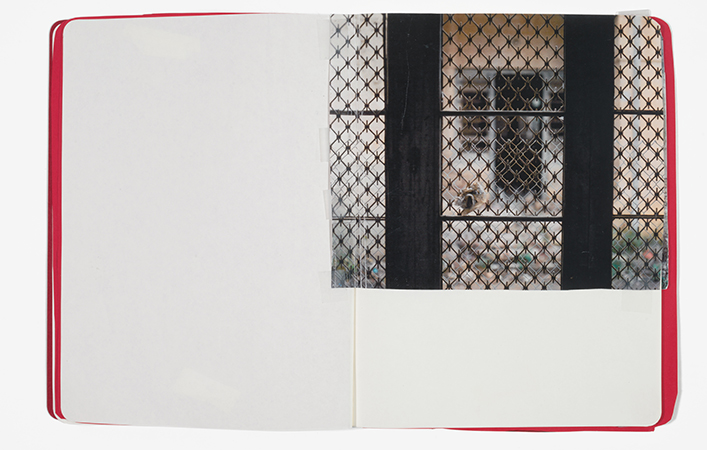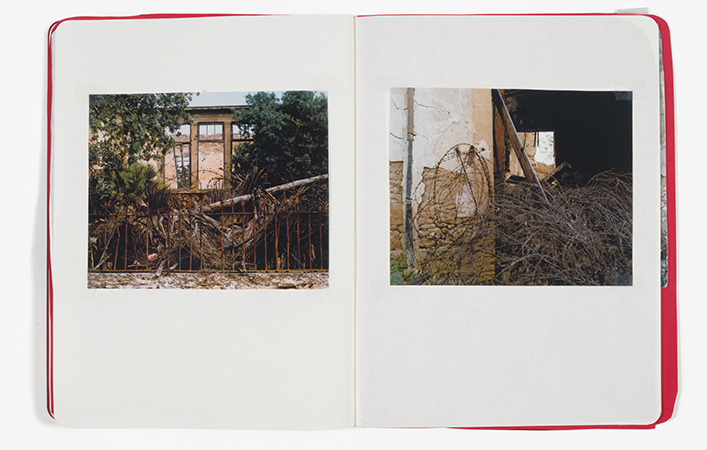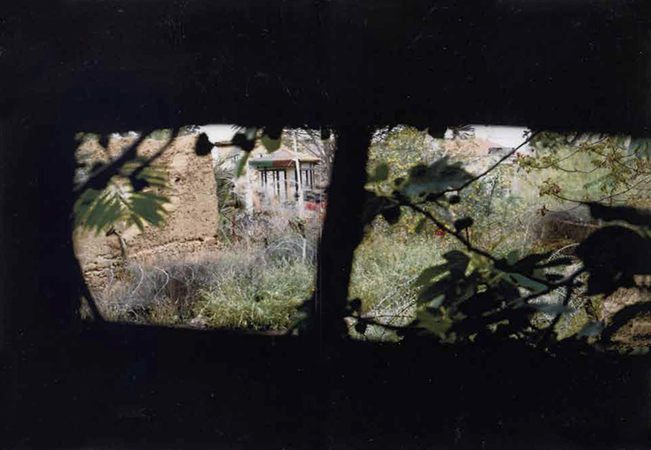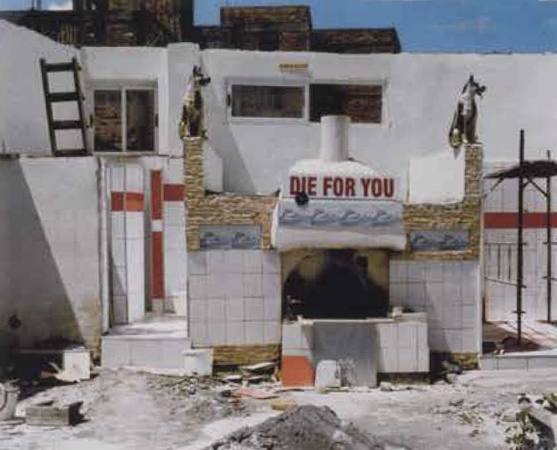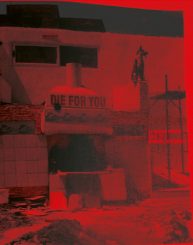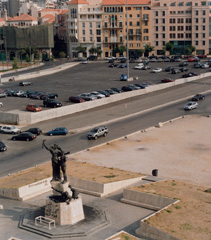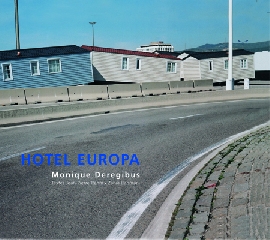The book The house Cyprus is proposed in a facsimile version, as a work indefinitely devoted to its own reproducibility. At the heart of the rehearsal comes the question of archaeological discovery. Central to the book, through the pallid presence of these bones that are exhumed from the past, archaeological research has emerged as a paradigmatic point of the history of the island, mirrored with Pompeii and its slow flow of lava, and by extension with all the places of mass graves of the world.
The first photograph of the book falls into disrepute with the law, and its presence testifies to the prohibition and the almost universal confiscation on the island. It was a question of exposing a device of capture through which to perceive always remains a veiled, interstitial and lacunar act. For the framework of photography is narrow and limited, it embraces the image, thereby nullifying a set of dialectical forms and causes. Thus one never ceases to look through, through walls, grilles, loopholes, barbed wire, one looks at the same time as the inertia of the images the photographic impossibility to narrate History. And yet, the book exists in the jumble of entangled branches, in the entropy of nature that forces the doors, rips the walls into a surge of grasses and cacti which multiply unceasingly. Here, the absurdity of war has indeed taken place, but a long time ago. She passed with the slightest breath of life in her furrow, leaving men struggling with a Kafkaesque situation of wall and division.
1974: the image now accounts for a space impossible to awaken, caramelized and insonore, it is space after and which lasts until today. Only perhaps the orange back teenager represents us. His hands are elegant, voracious and nervous on the computer keyboard. The child whose body is tense remains alone before the light of the screen. He plays war by machine interposed. We look at him without his knowledge, back, concentrated, and through him we look at the screen and his image.
It is thus that we learn to make war.
Monique Deregibus
* Two different photographs each shot at five copies.
Monique Deregibus
Photographe
Monique Deregibus is a photographer and professor at the Ecole Nationale Supérieure des Beaux – Arts in Lyon. “The Cyprus House, 2009-2013” is the third book produced in collaboration with Filigranes, Paris.
Each of the photographic series, inherited from a history of the conceptual landscape, is devoted to specific territories, sometimes near or far, always showing a strong interest for the unconscious reminiscences contained in the plan as well as for the notions of architecture and territory urban. These spaces, most of which are recorded in an editorial work, can be read as forming the abandoned scene of human tragedies.
Marie-Hélène Brousse
Auteur
Psychoanalyst, Marie-Hélène Brousse is a member of the board of the Freudian Cause School. For the magazine “Mental” (n ° 15, Feb. 2005), she published an article entitled “Towards a new psychoanalytic clinic”
Etienne Copeaux
Auteur
Historian specialist of the Turkish world
Etienne Copeaux is a researcher at the Research and Studies Group on the Mediterranean and the Middle East of Lyon. He is particularly interested in nationalism in Turkey, symbols and political mythology, and the Cyprus issue. His doctoral thesis defended in 1994 at the Paris-VIII University was titled From the Adriatic to the Sea of China: Turkish representations of the Turkish world through the history textbooks, 1931-1993. Étienne Copeaux regularly collaborates with magazines like Herodotus, REMMM, CEMOTI … He is the husband of the historian Claire Mauss.
